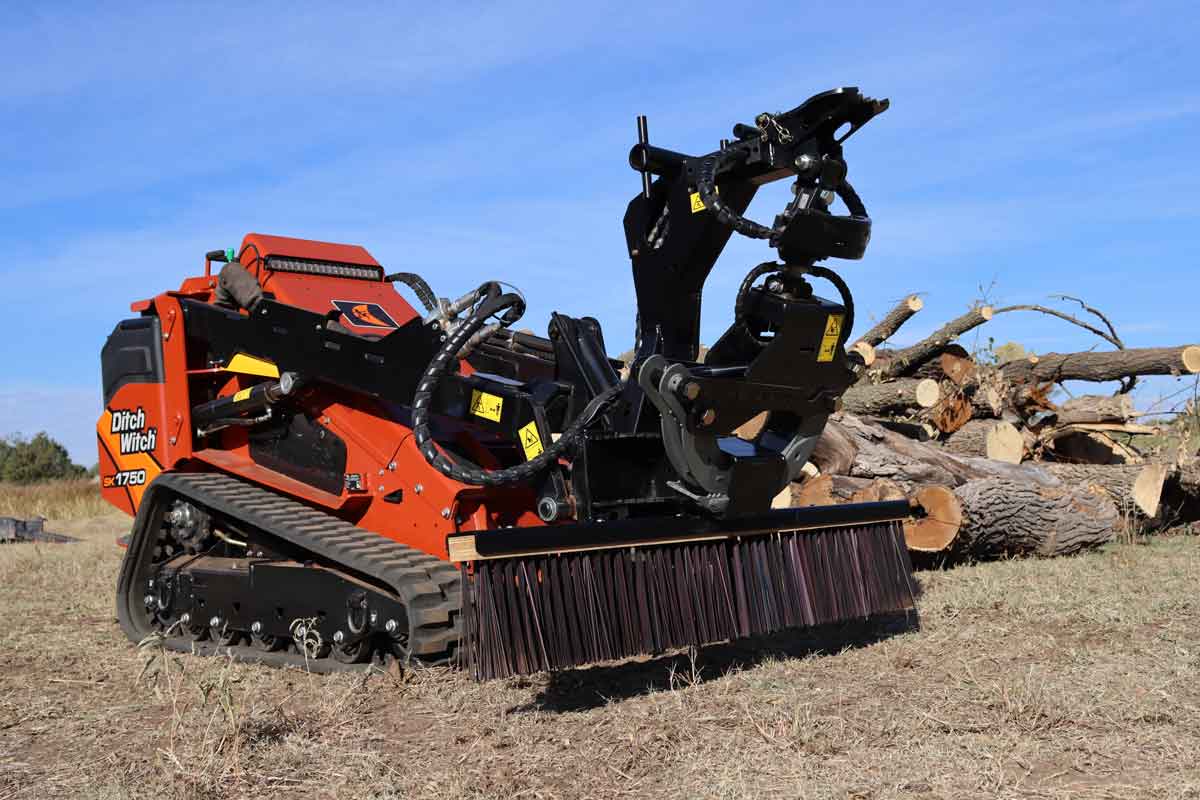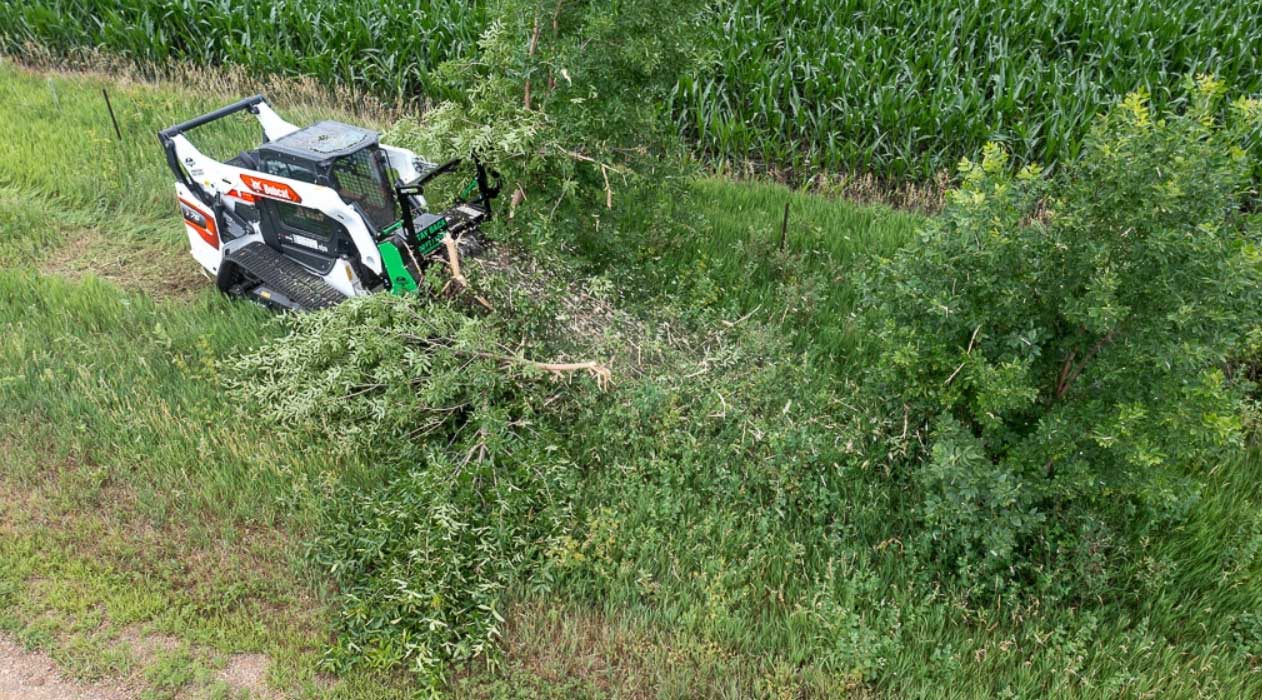Trencher Attachment Chain Options
 Trencher Attachment Chain Options — Standard, Double, Rock, Frost, Shark, Cleaners and Beyond
Trencher Attachment Chain Options — Standard, Double, Rock, Frost, Shark, Cleaners and Beyond
By Renee Bernardy
Trencher attachments are one of the most common tools you can attach to your skid steer or track loader for several uses from burying drain tile or downspouts in landscaping applications to digging ditches for utility lines by maintenance or utility crews. Various trencher models and chain options are available based on several factors.
Size Matters
“For optimal performance, choosing the proper trencher attachment model is based on the size and hydraulic flow of the skid steer or track loader the attachment will be used on,” according to Ron Peters, product manager at CEAttachments Inc. Most trencher attachments are designed for standard-flow machines that can run on 10 to 26 gpm of hydraulic flow, while high-flow trencher attachments are recommended strictly for machines with 26 to 40 gpm of hydraulic flow.
Depth Matters
Chain options for trenchers are quite varied, depending on the type of soil, depth desired and application or end-result you are looking for. They usually vary from 6- to 12-in. widths and from 24- to 60-in. depths. The 6-in. wide chain can dig depths from 24 in. up to 60 in. “Generally speaking, the wider the width, the less depth can be achieved,” states Peters. The 8-in. wide chain will dig depths of 36 and 48 in. and 10- to 12-in. wide chains typically dig depths up to 36 in.
Soil Matters
“The soil conditions are another factor that play a significant role in the type of chain one might choose,” says Peters.
Standard single chains (A) are recommended for use in loose, damp soil and are generally used on smaller trenchers with 6-in. digging widths. The dirt cup teeth are typically spread out on alternating sides of every other link. Dirt cup teeth are designed to cut into the soil and carry the dirt up and out of the trench to the auger that places it to one side of the trench.
Double standard chains (B) are the most popular style and recommended for use in harder, drier soil. These chains feature about twice the number of dirt cup teeth than a standard chain and tooth configuration. These are most common as they universally perform well in both hard and soft soils.
Half rock and frost chains (C) are a heavier-duty chain recommended for hard, frozen or mixed rocky soil conditions. These chains feature tough conical carbide rock teeth that rigorously cut away at the rocky soil. The configuration along the chain is typically dirt cup teeth alternating with rock teeth at various widths. This pattern chips away at the rocky soil in numerous places for the greatest penetration, while the dirt cup teeth carry the fragments and soil up and out of the trench.
Shark tooth chains are not as common and are recommended only for extreme rocky soil conditions. They feature solid steel carbide-tip teeth welded in different positions onto a plate attached to the chain. “In most cases, a dedicated rock wheel or cutter would be preferred for severe rock permeation,” adds Peters.
Other options for trencher attachments include a trench cleaner arm (D) that works as you move the trencher backward. The arm reaches out in front of the trencher and helps push the dirt down into the teeth. The teeth then carry the dirt up and out of the trench, leaving the bottom of the trench clean of any loose soil. “All of our trencher attachments come standard with a trench cleaning arm, manual side shift, hoses and flat face couplers,” says Peters.
Changing a Chain
For safe and proper operation, maintenance and performance always adhere to all warning and safety decals and all precautions as outlined in the owner-operator manual and be sure the machine is turned off when inspecting or changing the trencher chain. To change a chain, remove the master link, hook the new chain onto the old chain and master link and pull the old chain through. The new chain will follow around the trencher drive gear. Remove the old chain from the master link and install the new chain onto the master link. Adjust the chain to the proper tension as recommended in the owner-operator manual.
Maintenance
“For the best performance of your trencher attachment, be sure to power wash it thoroughly after use or at least daily,” says Peters. After cleaning, inspect the trencher teeth, bolts and hardware securing the teeth onto the chain for any cracks or damage. Teeth and hardware can then be replaced as needed to ensure that your trencher attachment is digging properly the next time you are ready to use it. Peters adds, “Be sure to also grease all fittings as recommended in the owner-operator manual, and you will be set to go.”
Renee Bernardy is the marketing coordinator for CEAttachments Inc., based in West Bend, Wis.




